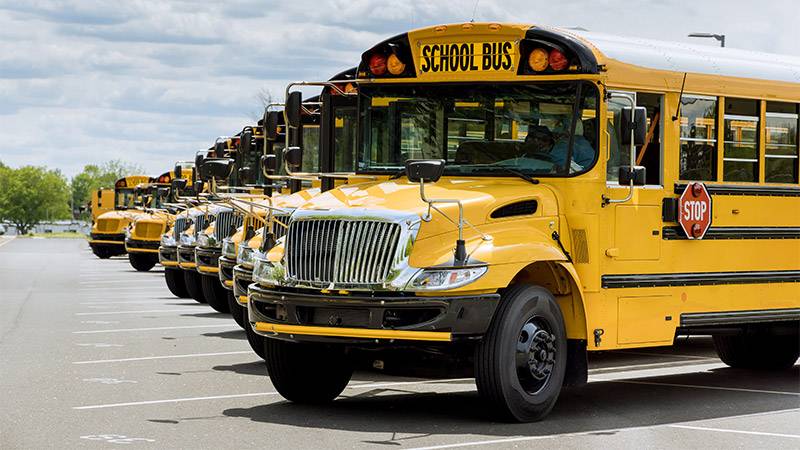In Illinois, school districts are vying for a share of the $400 million in grants available under the U.S. Environmental Protection Agency’s (EPA) Clean School Bus program, aimed at replacing diesel school buses with low-emission alternatives.
The recent round of funding saw an update in the eligibility requirements, a move instigated to include more Chicago Public Schools and other suburban districts that were previously left out. These districts, many situated in environmental justice communities, cater to a large number of low-income students.
The Clean School Bus program is part of a broader five-year, $5 billion investment initiated by the 2021 Bipartisan Infrastructure Law, which seeks to diminish greenhouse gas emissions and air pollution by promoting cleaner transportation alternatives.
The urgency of this transition is underscored by studies highlighting that children on school buses are exposed to four times more diesel emissions compared to those in a car ahead of the bus, escalating their risk of asthma.
Despite the noble intentions, the program faced criticism last year for excluding several low-income districts from its priority list, which required at least 20% of the student population to be below the poverty line. This criterion overlooked large districts with high numbers of low-income households, including the Chicago Public Schools.
Addressing this, the recent grant opportunity has prioritized Title 1 school districts, which receive federal financial aid due to a high number of low-income students. Furthermore, large public school districts with over 35,000 students or 45 schools that are low-income can now undergo a self-certification process to be included in the priority list. This amendment has enabled Chicago Public Schools, serving over 65,000 low-income students, to apply for the grants.
The new funding opportunity is the second made available as part of a five-year, $5 billion investment from the 2021 Bipartisan Infrastructure Law to replace diesel buses with cleaner alternatives to reduce greenhouse gas emissions and air pollution.
However, the program still harbors a contentious requirement urging school districts to scrap their diesel buses before availing funds for new low-emission buses. Critics argue that this prerequisite not only poses a significant barrier to districts that don’t own buses but also hinders those aspiring to build their fleet using the program’s funds.
Last year, 14 Illinois lawmakers urged the EPA to revisit this stipulation, emphasizing that it contradicts the program’s core objective of reducing harmful emissions across as many schools as possible.
In response, the EPA has introduced exemptions to the scrappage requirement in this year’s grant opportunity, albeit with conditions that some argue continue to maintain barriers for districts intending to own their fleets. According to Inside Climate News, the conditions include prioritizing low-income districts and those contracting with private fleets unwilling or unable to replace their existing buses with electric alternatives.
As the application process unfolds, Tim Farquer, founder of the Bus-2-Grid Initiative, anticipates at least 50 Illinois school districts to apply for a minimum of 200 new electric school buses. The EPA plans to announce the selected 25 to 50 applicants by January 2024, with the grant distribution slated for March 2024.
Moreover, school districts have another opportunity to accelerate the electric school bus rollout with additional funds available this fall through a legal settlement with Volkswagen facilitated by the Illinois Environmental Protection Agency. Another round of Clean School Bus rebates is expected by the end of 2023.
More inspiring green news similar to this:


